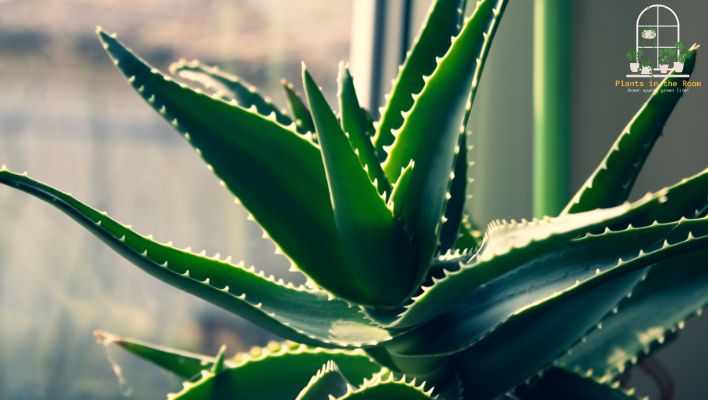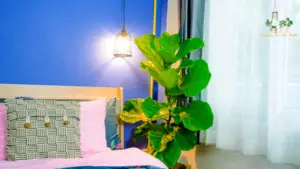This article covers the following areas –
- Guide to Choosing the Right Aloe Vera Plant for Your Home
- How to Arrange Aloe Vera Plants in Your Home
- Guide to Ensuring Proper Care for Your Aloe Vera Plants
Aloe Vera, often hailed as a “wonder plant,” has a rich history of various uses that run the gamut from health, beauty, medicinal, and even home decor. Aloe Vera plants can effortlessly breathe new life into your home with their striking aesthetic and low-maintenance nature. In this article, I’ll provide simple steps and suggestions on how to integrate Aloe Vera plants into your home decor.
Incorporating Aloe Vera plants into home decor involves selecting appropriate plants, arranging them in visually appealing ways, and ensuring proper care. They can be showcased individually in pots, paired with other succulents, or arranged in terrariums.
Continue reading for a more comprehensive understanding of incorporating Aloe Vera plants into your home decor. We delve into specifics on selecting the right Aloe Vera species, innovative arrangement ideas, and detailed care instructions to ensure your plants thrive and continue to embellish your space.
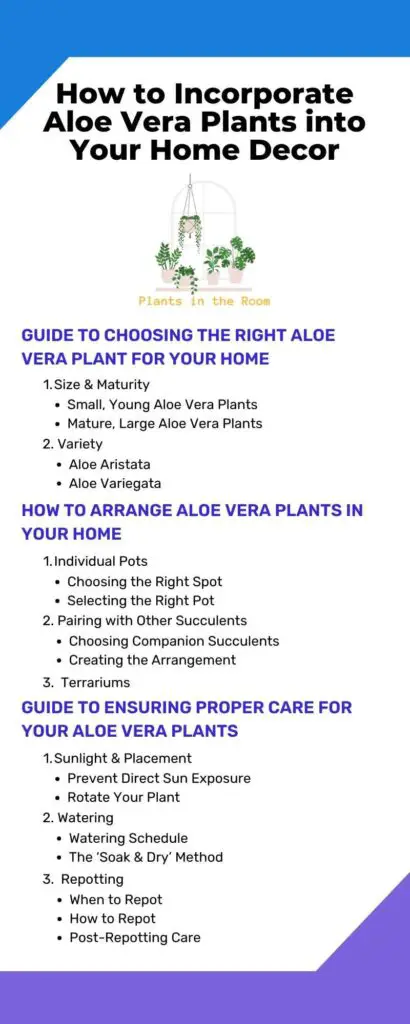
Guide to Choosing the Right Aloe Vera Plant for Your Home
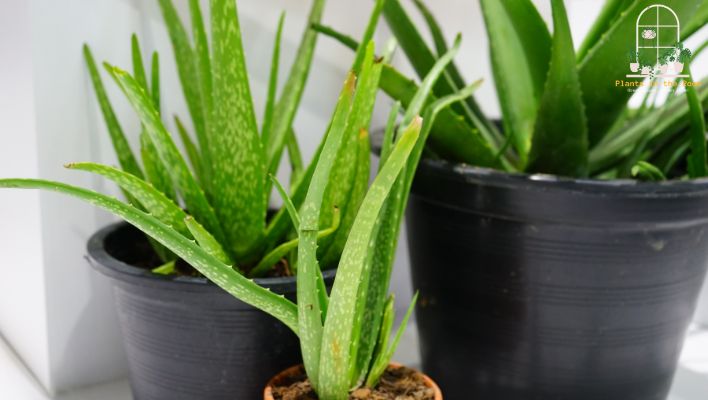
When it comes to home decor, incorporating greenery can significantly enhance your space’s aesthetic appeal and tranquility. One of the more popular choices of plants among home decor enthusiasts and green thumbs alike is the versatile and stunning Aloe Vera. With its robust nature and unique appearance, it’s not just a plant; it’s a statement.
However, before you bring this green gem into your home, it’s important to make informed decisions about the plant’s type, size, and maturity to ensure it complements your space perfectly. This section provides a detailed guide to help you choose the right Aloe Vera plant for your home.
1. Size and Maturity
The size and maturity of your Aloe Vera plant will play a crucial role in its placement within your home. To ensure a harmonious fit, you need to consider the dimensions of the space where you plan to place the plant. As a rule of thumb, the more compact the area, the younger and smaller the plant should be. Conversely, mature, larger plants require more spacious areas. Let’s delve deeper into the specifics.
Small, Young Aloe Vera Plants
Small, young Aloe Vera plants are perfect for those areas in your home where space is at a premium. For instance:
- Office Desks: A mini Aloe Vera can sit comfortably on a corner of your desk without taking up much space. Not only will it add a touch of green to your workspace, but it’s also believed to absorb electromagnetic radiation from electronic devices.
- Bathroom Counters: The high humidity in bathrooms can be beneficial for young Aloe Vera plants, and their size won’t dominate the counter space.
- Kitchen Windowsills: Young Aloe Vera plants love sunlight, making a kitchen windowsill an ideal location. Plus, it’s handy for those times you need its healing properties for kitchen burns.
Mature, Large Aloe Vera Plants
For larger spaces, mature Aloe Vera plants can become a focal point, enhancing the room’s visual appeal. Consider these placements:
- Living Rooms: A large, mature Aloe Vera plant in a stylish pot can serve as an attractive living room centerpiece.
- Patios: If you have a covered patio that gets plenty of indirect sunlight, a mature Aloe Vera plant can add a touch of exotic appeal.
2. Variety
The genus Aloe boasts over 500 species, each offering its unique aesthetic. While Aloe Vera is the most well-known and widely used species, don’t limit yourself to this alone. Exploring different species can bring diversity and intrigue to your decor.
Aloe Aristata
Also known as Torch Plant or Lace Aloe, Aloe Aristata is a beautiful species characterized by its rosette pattern and soft, white bristles. Its leaves spiral out from the center, creating a distinctive pattern that can add a point of interest to your decor.
Aloe Variegata
Aloe Variegata, or Partridge-breasted Aloe, is another species worth considering. Its short, stout leaves bear white “stripes,” giving it a unique and attractive appearance. A group of these can serve as an interesting tabletop centerpiece.
While many other Aloe species exist, the Aristata and Variegata are especially suited for indoor growth. Remember, the key is experimenting and discovering what works best for your style and home environment. No matter what type or size of Aloe you choose, this fascinating plant will surely bring a fresh, vibrant energy to your home decor.
How to Arrange Aloe Vera Plants in Your Home
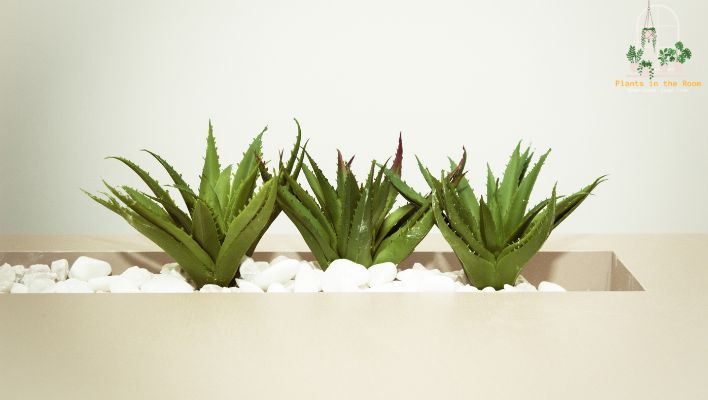
Once you’ve selected the ideal Aloe Vera plants for your home, the next step is deciding how to arrange them. Their arrangement can drastically influence the overall aesthetic of your space. Whether displayed in individual pots or grouped together in a terrarium, these versatile plants provide endless opportunities for creativity. I’ll now guide you through various ways to arrange Aloe Vera plants in your home, transforming them from mere houseplants into striking elements of your decor.
1. Individual Pots
Aloe Vera plants make a powerful visual impact even when displayed individually. When housed in a well-chosen pot, a single plant can become a standalone piece of decor that adds a natural charm to various settings in your home. Let’s explore the art of displaying Aloe Vera plants in individual pots.
Choosing the Right Spot
An Aloe Vera plant in a pot can elevate the look of any room. Some ideal placements include:
- Tabletops: Whether it’s a coffee table in your living room or an end table by your bedside, an Aloe Vera plant can serve as a refreshing centerpiece.
- Windowsills: Aloe Vera plants love sunlight, making sunny windowsills a prime location. Kitchen and bathroom windowsills can especially benefit from a pop of green.
- Shelves: Shelves provide the perfect platform for your potted Aloe Vera. You could even create an entire “green shelf” with a variety of potted plants.
Selecting the Right Pot
The pot you choose can significantly influence the overall aesthetic. Some points to consider while choosing a pot are:
- Size: The pot should be just large enough to accommodate the plant’s roots. A too-large pot can lead to waterlogging and, ultimately, root rot.
- Material: Ceramic and terracotta pots are often the best choices for Aloe Vera as they allow the soil to dry out completely between watering.
- Design: The pot’s design should complement your home’s overall decor style. From minimalist white ceramics to rustic terracotta, there’s a pot for every interior design aesthetic.
2. Pairing with Other Succulents
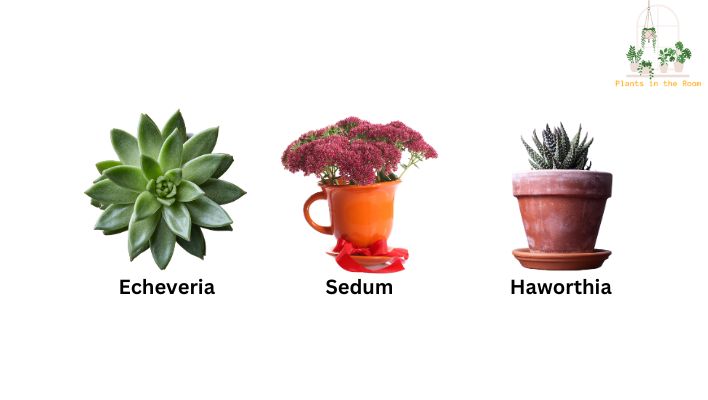
You may consider pairing your Aloe Vera plants with other succulents for an attractive and diverse arrangement. The diversity in sizes, shapes, and colors of different succulents can create an interesting visual dynamic. Here’s a simple guide to get you started with such arrangements.
Choosing Companion Succulents
While Aloe Vera plants can coexist with many succulents, here are a few that make particularly good companions due to their similar light and water requirements:
- Echeveria: With their beautiful rosette shape and a wide variety of colors, Echeveria plants can provide a lovely contrast to the upright structure of Aloe Vera.
- Sedum: Also known as stonecrop, Sedum offers a myriad of shapes and sizes, from ground-cover varieties to taller, upright plants.
- Haworthia: These are similar to Aloe Vera in appearance and care, adding more texture and interest to the arrangement.
Creating the Arrangement
When arranging your Aloe Vera with other succulents, consider the following:
- Color and Texture: Aim for a balance of colors and textures. A mix of green tones, shapes, and sizes will add depth and interest.
- Size and Proportions: Place taller plants, like Aloe Vera, towards the back of your pot if it’s against a wall or in the center if it can be viewed from all angles. Surround them with smaller, trailing succulents.
- Space: Ensure each plant has enough room to grow without being crowded by others. This also helps prevent disease spread.
3. Terrariums
For a unique approach to displaying Aloe Vera plants, consider terrariums. These mini, self-contained ecosystems offer an innovative way to incorporate Aloe Vera and other succulents into your decor and can also serve as a focal point in any room. The transparency of the glass container allows for an unobstructed view of your plants from all angles, creating a captivating display of greenery.
When creating a terrarium:
- Choose a Suitable Container: Glass containers with a lid are perfect as they create a humid environment conducive to plant growth. However, since Aloe Vera prefers a drier environment, a container with an open top would be ideal.
- Create Layers: Start with a layer of pebbles for drainage, followed by activated charcoal to keep the water fresh, and then add a layer of potting mix.
- Arrangement: When arranging the plants in your terrarium, place taller plants like Aloe Vera in the back or middle, with smaller plants towards the front.
- Care: Place the terrarium in a location that receives plenty of indirect sunlight and water sparingly.
With these tips in mind, you’re now equipped to incorporate Aloe Vera plants into your home decor in an aesthetically pleasing way and expressive of your personal style. Whether showcased individually or as part of a group, Aloe Vera plants provide a natural, calming, and intriguing element to any decor.
Guide to Ensuring Proper Care for Your Aloe Vera Plants
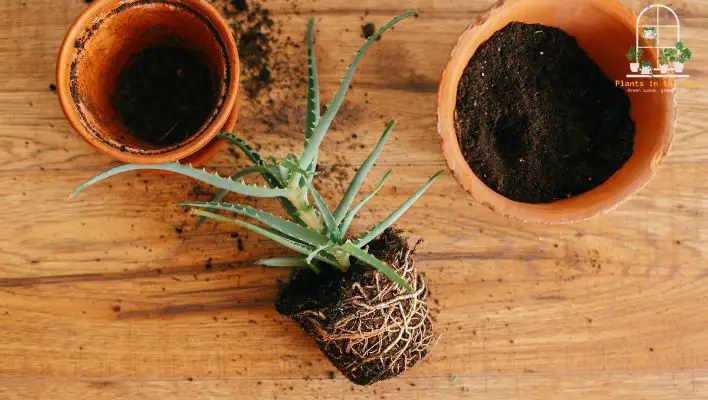
Aloe Vera plants are a wonderful addition to your home decor, but they require proper care to keep them healthy and vibrant. Although Aloe Vera plants are known for their hardiness and low-maintenance nature, understanding their needs regarding sunlight, watering, and repotting can ensure they thrive and continue to enhance your home’s aesthetic appeal. This section offers insights into how to care for your Aloe Vera plants, ensuring they remain a beautiful, lush part of your decor for years to come.
1. Sunlight and Placement
For Aloe Vera plants, the right amount of sunlight is crucial to their well-being. These sun-loving succulents prefer bright but indirect light. They thrive in east or west-facing windows that get plenty of natural light. However, here are a few key points to keep in mind to ensure your plants receive optimal light exposure.
Prevent Direct Sun Exposure
Despite being sun-loving, Aloe Vera plants are susceptible to scorching if exposed to direct, harsh sunlight, especially during midday. If the leaves of your plant start turning brown or appear ‘sunburned’, it might be receiving too much direct sunlight.
Rotate Your Plant
Rotating your Aloe Vera plant periodically will ensure that all parts of it get an equal amount of light. This prevents the plant from leaning towards one side, which can happen if only one side is exposed to sunlight.
2. Watering
While Aloe Vera plants are known for their drought tolerance, they do require water to thrive. However, due to their succulent nature, they require less water than most other houseplants. Here’s a simple guide to watering your Aloe Vera plants.
Watering Schedule
A good rule of thumb is to water your Aloe Vera plant thoroughly every two to three weeks in the growing season (spring and summer). In the cooler months, you can reduce watering to once a month.
The ‘Soak and Dry’ Method
The best method to water Aloe Vera plants is the ‘soak and dry’ method. This involves watering the plant thoroughly and then allowing the soil to dry out completely before watering again. This technique prevents overwatering and mimics the plant’s natural desert-like habitat.
3. Repotting
As your Aloe Vera plant matures, it may outgrow its current pot, requiring repotting. This provides an opportunity to give the plant more space to grow and also to upgrade your pot style to keep up with your evolving decor. Here’s a guide to repotting your Aloe Vera.
When to Repot
Typically, Aloe Vera plants need repotting every 2-3 years, but the easiest way to tell is if you see roots protruding from the pot’s drainage holes or if the plant appears top-heavy and unbalanced.
How to Repot
To repot, carefully remove the plant from its current pot, shaking off excess soil from the roots. Place it in a new pot (ideally only slightly larger than the previous one) that’s been filled halfway with a well-draining succulent soil mix. Then, fill the rest of the pot with soil, pressing it gently around the base of the plant.
Post-Repotting Care
After repotting, don’t water the plant for a week to prevent root rot. This gives it time to recover from any root damage that might have occurred during the process.
With these care tips, your Aloe Vera plants will not only survive but thrive, serving as a long-lasting, living element of your home decor. Remember, the key to a healthy Aloe Vera plant is a balance of sunlight, water, and a suitable growing space.
In Conclusion
Aloe Vera plants provide an excellent way to bring a touch of nature into your home. Their unique aesthetic, hardiness, and low-maintenance nature make them ideal for incorporation into your home decor.
You can transform your living space with these lush, green succulents by selecting the appropriate plants, arranging them in visually captivating ways, and ensuring their proper care. Just remember, the key to a thriving Aloe Vera plant is the right balance of sunlight and water and sufficient space for growth. With these tips, your Aloe Vera plants will be more than just houseplants – they will become an integral, living part of your home’s decor.

